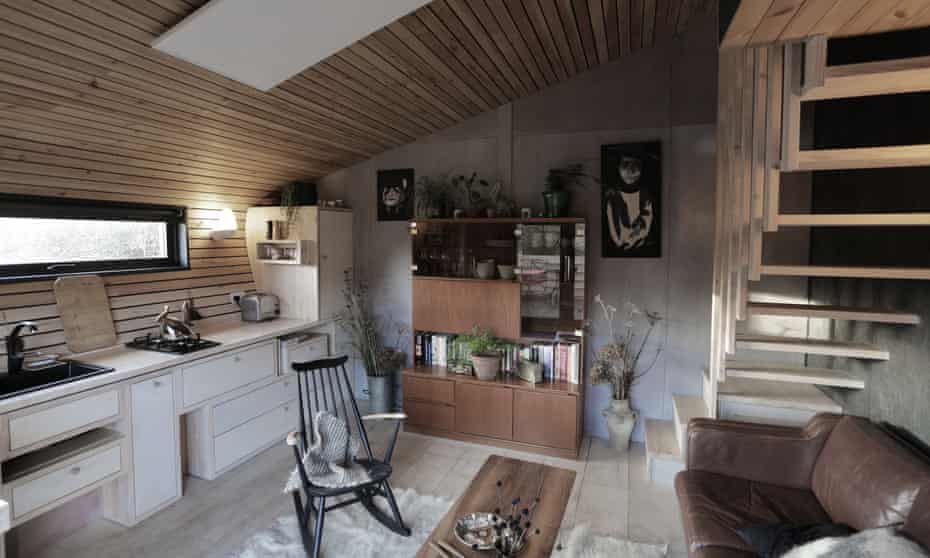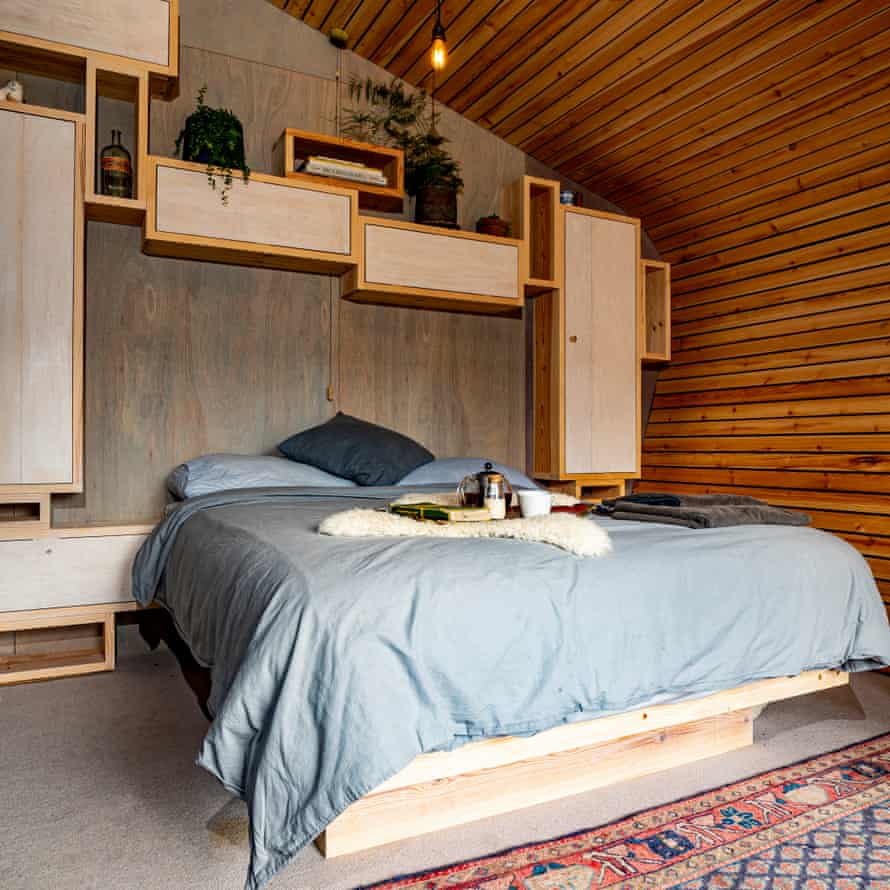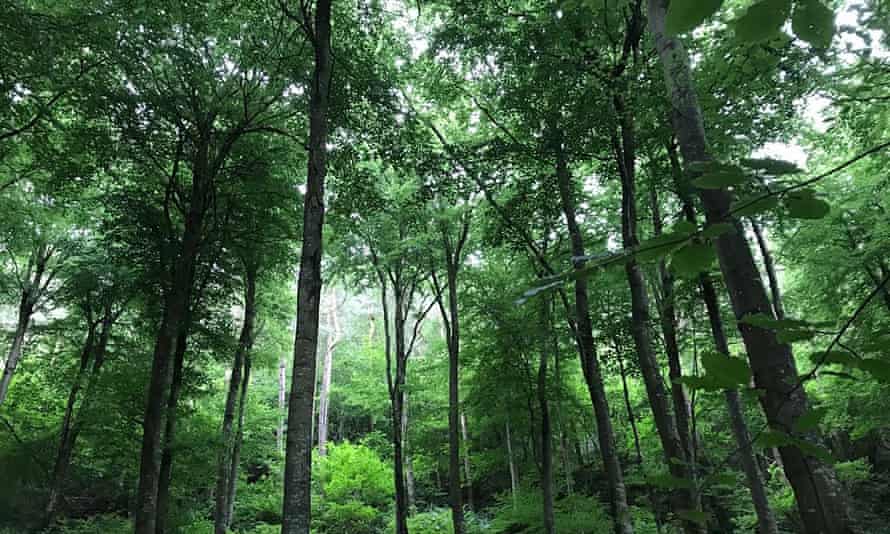Do you remember that scene in Close Encounters of the Third Kind in which Richard Dreyfuss starts to model Devils Tower out of mashed potato? Well, something similar has taken place in real life in a hamlet in mid-Wales.
I’m standing with Paul, co-owner of the Red Kite Cabin in Powys,asking him where the inspiration for its unusual shape came from.
“If you look across at Hanter Hill,” he says, “you’ll see that the curve of the cabin’s roof mirrors its shape almost exactly. The funny thing is, it wasn’t at all deliberate, though I do wonder if I was subconsciously influenced by it.”
Along with his wife, Rachael, carpenter and oak-framer Paul designed and created the cabin in their back garden. It took them just six months to build, using local materials wherever possible, including cedar and douglas fir. With no possibility of taking guest bookings during the pandemic, they spent last winter in it with their children, to sample life in a tiny house.
I’d arrived by bicycle from Hereford station. After a pleasant 23-mile backroad ride through villages and the border town of Kington (ideal for stocking up on supplies), I’d reached the cabin in the farming community of Burlingjobb.

Stepping inside, I found the spacious main living room contained a contemporary well-stocked kitchen, a clever handmade fold-out table and stools, and a stash of good books. Lying full-length on the sofa at dusk to listen to the chatter of birdsong and the occasional bleat of a lamb was glorious. There was even a thoughtful welcome package that included a bottle of Beaujolais, a sourdough loaf baked by Rachael, some posh chocolate and an enchanting arrangement of flowers from the garden.
Heating is supplied by infrared panels. “Wood-burners aren’t great for the environment,” said Paul, “so we chose these instead – they’re extremely efficient.” However, the cabin’s clever “thermal bridge” walls kept it so snug inside that I never had to turn the panels on.
Exploring further, I discovered a little loo and, at the top of the staircase, a child-friendly den with double and single beds. But the star of the show was the bedroom – truly the stuff of honeymoons. The soft covers on the large double bed made me want to hunker down inside and not emerge for weeks. Large and exotic-looking pot plants bring the outdoors inside. And each evening I wallowed in the longest antique roll-top bath I’ve ever seen, while gazing out of the picture window at Hanter Hill and Hergest Ridge. And whenever I fancied rather speedier ablutions, there was an en suite shower room.

My original plan for my two-night stay had been to cycle to good places for a country hike, but I soon realised I wouldn’t be needing my bike. Instead, I shouldered my day-sack, acknowledged the friendly waves of passing tractor drivers, and five minutes later was immersed in greenery.
A footpath climbs steadily up a flank of rugged Hanter Hill before launching itself up on to Hergest (pronounced Hargest) Ridge. I’d wanted to see this mighty straddler of the Anglo-Welsh border since, as a teenager in my first job, I’d found myself in charge of the studio tapes for Mike Oldfield’s Hergest Ridge album.
The hill did not disappoint, despite a mist that concealed the surrounding countryside. Hergest Ridge forms one of the highlights of the Offa’s Dyke Path and yet I had the entire 2km-long summit to myself. Wherever I walked I was accompanied by the manic life-affirming songs of skylarks. The unusual breed of wild horses I came across were blessed with the most arresting eyes, as if they were all off to a fancy-dress party as 1920s flapper girls. They were rather more interested in grazing than in the 19th-century racecourse whose circular track is still evident.

Dropping off the ridge, I rambled along footpaths and bridleways, taking in the villages of Gladestry and Huntington. I was sad not be able to stop at The Swan at Huntington, which was closed due to the lockdown (but has since reopened). This 17th-century real ale “cottage pub” has a reputation as a somewhat eccentric spot, its interior unchanged since the 1950s. I consoled myself with a visit to Huntington Castle instead. A once-important fortress, it was abandoned in the early 15th century and is now all but swallowed up by trees. The swathes of forget-me-nots there seemed to voice a desperate last appeal from the crumbling mute citadel.
When I climbed back up on to Hergest Ridge, the sun had driven away the mist, revealing a panorama of hills dotted with farmsteads and hamlets. I unwittingly spooked a pair of hares and all but tripped over a third on my way back home.
And to cap it all, that evening as I gazed out from Red Kite Cabin’s bath, I saw a red kite looping and spiralling across the sky – the northern lights in avian form.





